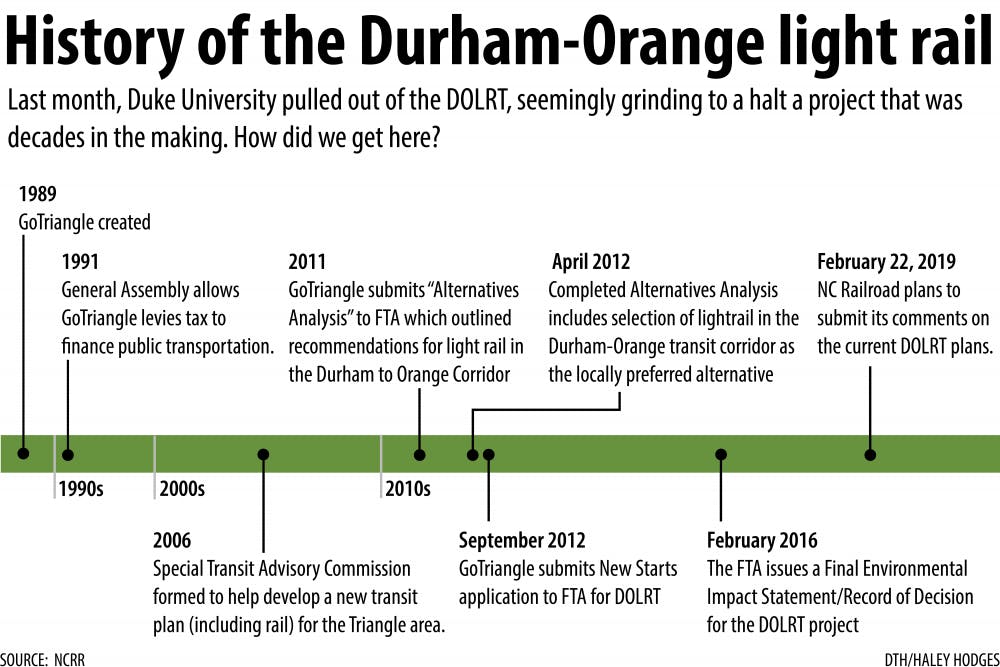Decades of planning have gone into the Durham-Orange Light Rail Transit project, but following Duke University’s recent withdrawal of fiscal support and the North Carolina Railroad Company’s refusal to approve current design plans, its future has come into question.
The loss of support from Duke and the lack of approval from the railroad company raises concerns about the unresolved issues critics have said GoTriangle, the transit authority spearheading this project, has yet to address.
In the past year, the project has been marked by increased expenses and sudden adjustments to the plan, such as the decision to build a tunnel through downtown Durham to accommodate the rail.
The project, however, extends back decades.
Tax policies between 1989 and 1997 laid the foundations for regional transit projects. In 1989, the founding of Triangle Transit signaled the region’s dedication to improving public transportation. Various taxes implemented in the years following financed regional bus operations and more.
In 1998, a major investment study discussed a potential light rail between Durham and Chapel Hill. In December 2001, the rail was mentioned again. At this time, Duke joined the discussion — over the next several years, Durham and Orange counties, Duke and other partners began to draft and redraft plans for a transit route.
In 2011 and 2012, voters in both counties approved a half-cent sales tax to raise money for transit projects. In the years since, GoTriangle and project partners have conducted extensive engineering and financial plans and spent over $130 million in the process.
Julie McClintock, a member of Chapel Hill Alliance for a Liveable Town, a local group who opposes the light rail, was involved in early discussions about the light rail when she served on the Chapel Hill Town Council in the early 2000s.



